Did you know that 7% of bloggers pitch to 100 or more blogs each month, compared to 50% of bloggers who reach out to 10 or fewer connections each month for guest posts?
As a content writer, you probably know that reaching the #1 Google page is not as easy as it sounds. And once you're there, your job is not done.
Due to the daily content production, maintaining a relevant position on Google search queries is quite questionable.
Not to mention consistent development of the SEO strategies, Google updates, and reader's field of interest as the game changers that dictate your content's direction, quality, and performance.
Hence, this is where guest blogging as a productive content marketing tactic enters the game.
In today's article, we'll explain guest blogging and how to start using it to grow your audience, build your authority, and improve traffic to your website.
Let's go!
What is Guest Blogging?
Guest posting, also known as guest blogging, is simply creating and publishing an article on someone else's website.
It is especially effective if your content is promoted on websites with similar specialties — it attracts a targeted audience, boost relevance of your content, and establish you as a trustworthy source.
Would you mind writing about your areas of expertise and having people promote your work for free? Nod your head, please, and check out the benefits:
Benefits of Guest Blogging
Here are some benefits of implementing guest blogging in your content strategy:
- Build reputation — Acquire a reputation as an industry expert or thought leader.
- Develop your personal brand — Grow awareness about your products or services.
- Expand your audience — Attract new social media followers, subscribers, leads, etc.
- Boost SEO performance — Improve content relevance in search queries.
- Generate authoritative backlinks — Boost traffic towards your website from reliable sources.
- Build partnerships — Create strong relationships with other co-marketers or businesses.
- Increase referral traffic — Create valuable content that will increase your credibility.
I'm sure you're wondering what the distinction is between an article and a guest post? Let’s find out:
Difference Between Article and Guest Sites?
We choose article sites for public sharing of articles since they allow for short content (under 500 words) with one image in the body. Any content can be published on article sites and go live instantly.
Guest posting sites are similar to blogging sites.
To post on guest sites, however, you must first receive approval from the administrators and comply with specific rules such as word count, link count, article niche, quality tone, and so on.
Now that you know what you can get and how they are different from article sites, let’s get into how to start guest blogging to achieve successful results.
How To Start Guest Blogging — 4 Tactics For Instant Results
1. Utilize a Variety of Methods to Identify Guest Post Targets
According to best practices, you should start by focusing on the websites with the most significant potential to benefit from your guest posts.
But how to know which one I should target?
Let’s see the top 3 proven techniques that can help you with that:
#1 Google search strings
Use Google to identify websites that accept guest posts on the subjects you wish to write about.
Examples of search queries look something like this:
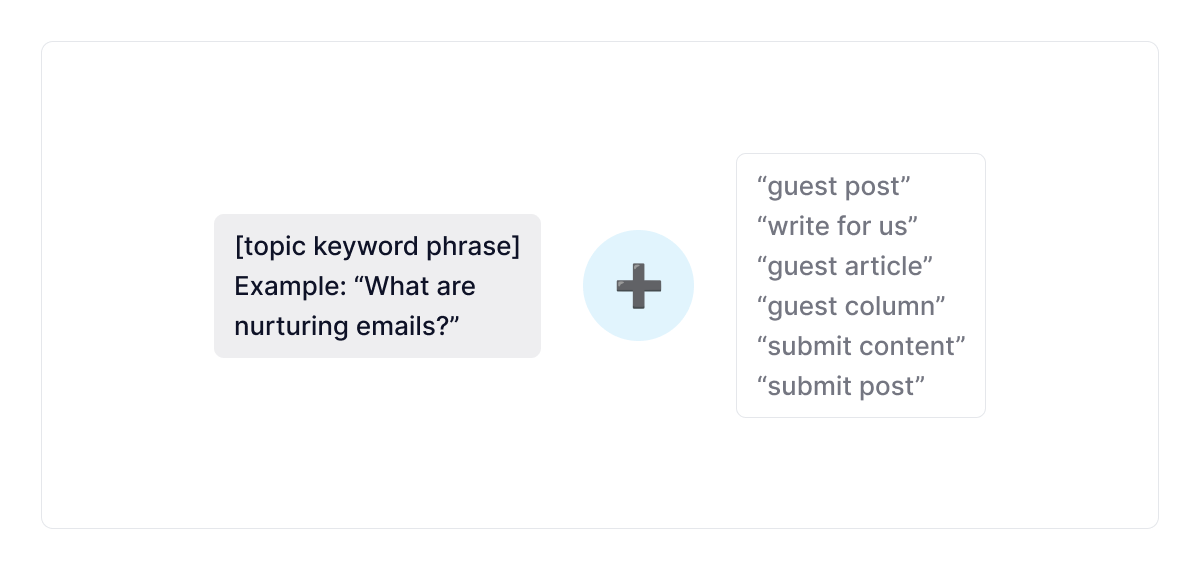
Here is an example of what that outcome can look like in practice:
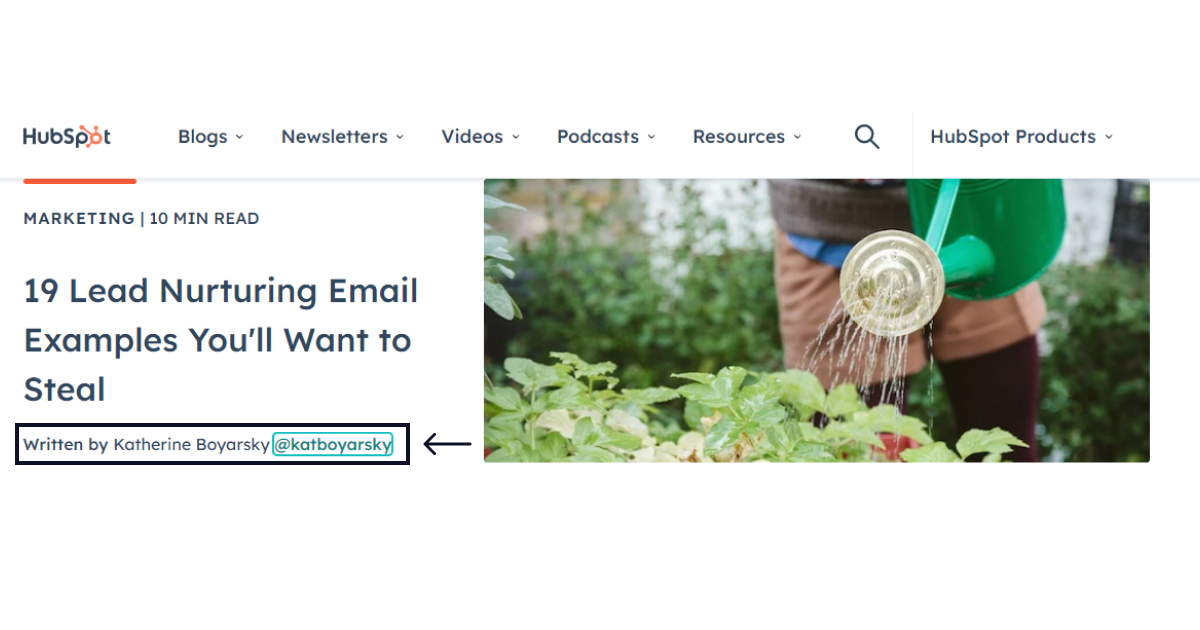
Adding search strings to relevant keywords, you can filter relevant websites that incorporate guest blogging.
#2 Reverse image search
If you want to find websites that might collaborate with you, look for authors who write many guest posts in your niche.
Find the picture they use for their Bio and past URL in the Google image search window.
Let’s check that out:

This research will provide information about websites where authors publish their guest content.
#3 Twitter search
Best practices also suggest that Twitter is an outstanding source of blogging opportunities.
All you need to do is to type ”{your keyword} + guest post” and hit enter.
Here is what you can expect:
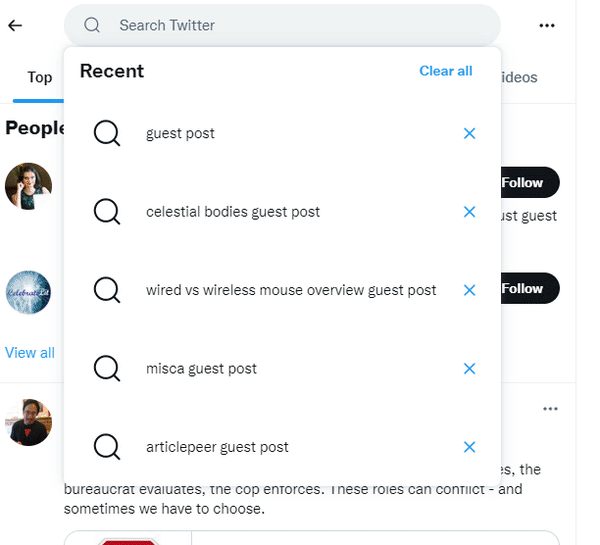
You will find many top-notch websites that accept guest posts in just a few seconds.
2. Start Building Relationships
The second most critical step is establishing partnerships with websites that are relevant to your content.
It is one thing to find a website that collaborates with other authors. it is quite another to choose one that will bring desirable results.
For instance, If your area of expertise is hardware analysis, you will not choose a website focused on marketing methods, right?
So how to build relationships with websites relevant to your niche?
#1 Share on social media
You can select a blogger in the same niche with whom you want to collaborate and post his articles on social media.
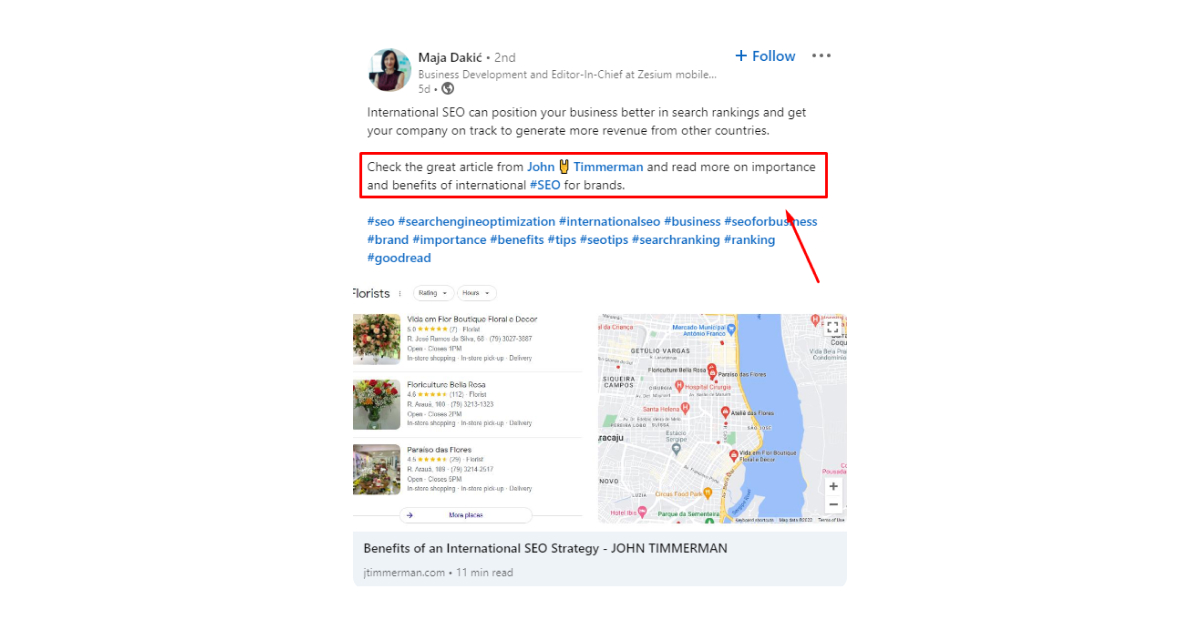
That way, you're taking a non-obnoxious and modest "first" move towards collaboration while also purposely attracting attention.
#2 Interact through blog comments
Another clever and subtle approach to developing relationships is through the comment box on blog posts, as shown in the following example:
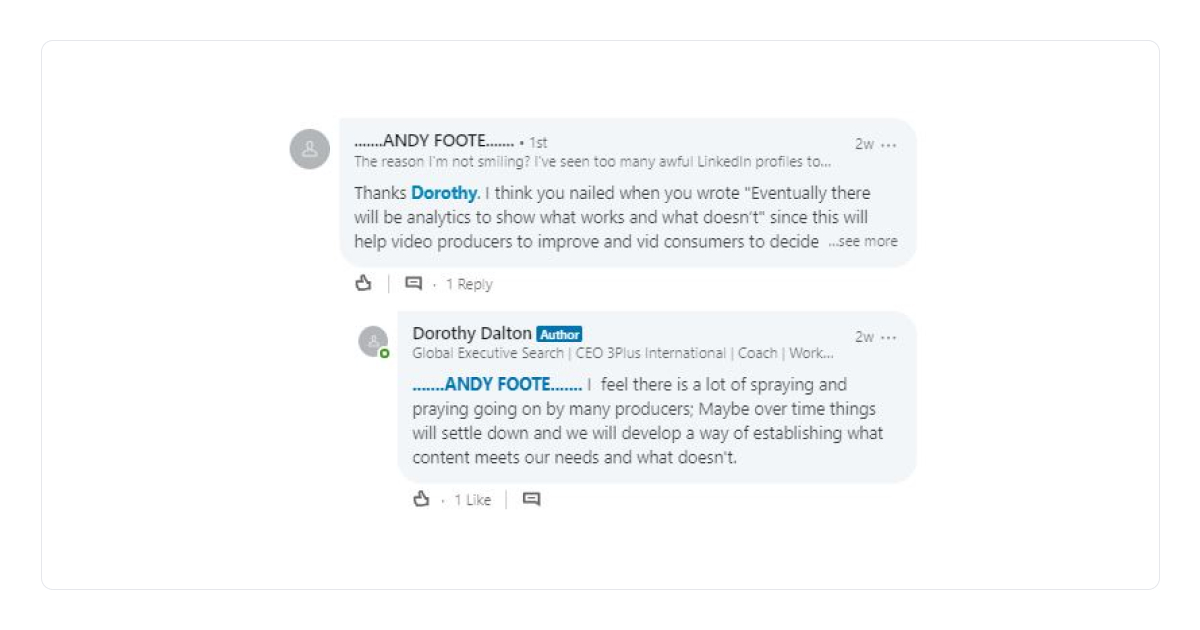
In this approach, you can grab the attention of the people you wish to collaborate with, creating the "scene" for suggesting collaboration without being ignored or immediately turned down.
#3 Build relationships via email
Creating email outreach is the perfect solution if you don’t have time to deal with social media interactions.
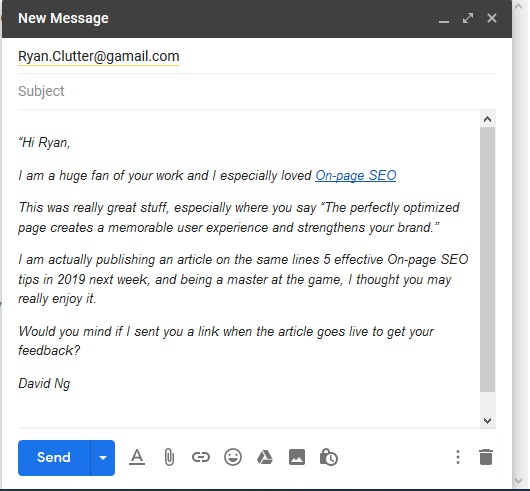
And, if you are not sure how to craft a cold email example that will get you a response, you can utilize AI tools, such as TextCortex, to generate them for you.
Just enter a few bullet points about the email subject, and TextCortex will generate an email for you in seconds.
Email outreach will not save you from researching your targeted websites, but it will make the process less time-consuming and much more straightforward.
3. Level Up Your Content
And finally, we are at the point where you are creating guest content for publishing.
As we mentioned at the beginning, to post on guest sites, you must familiarize yourself with their requirements for publishing.
Here are some guidelines to keep in mind when creating your guest blog post:
#1 Mind word count
Every website has specific article length requirements. Yours shouldn't go beyond those limitations.
For example, if you have an in-depth guide on a particular subject that counts 3000 words, and the guest website allows only 1500, you can break your piece into two parts.
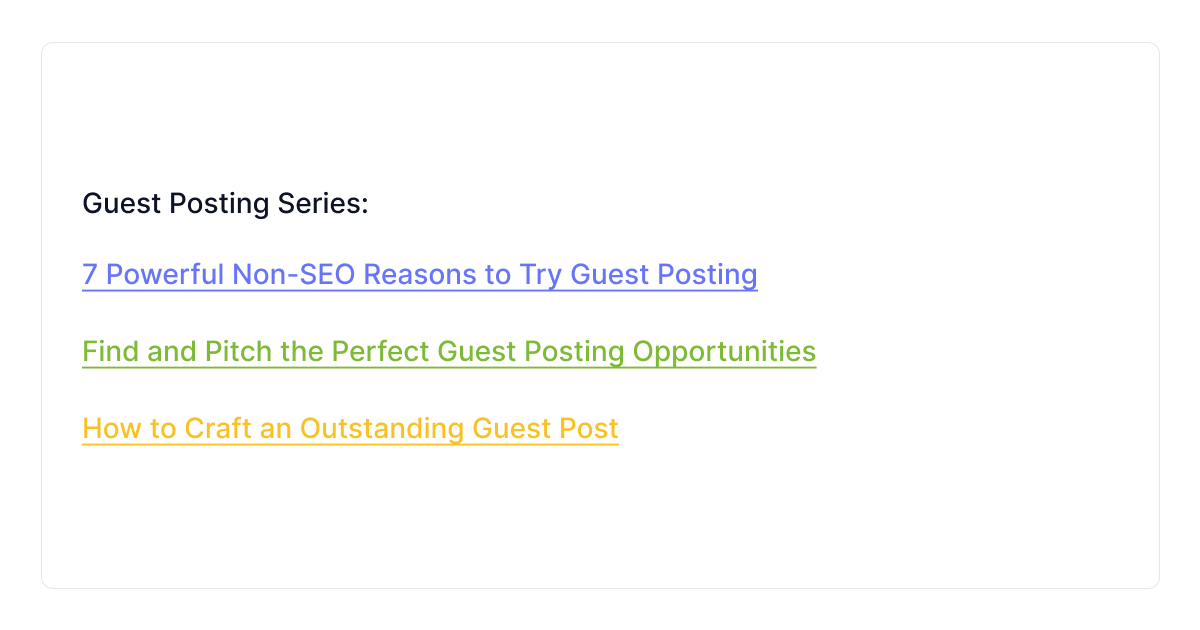
This way, you won't have to write a new article on the same topic to meet the word count goal - a practice known as repurposing blog content.
Not only that you will keep the quality of your original content intact, but also building a solid blog funnel.
#2 Provide high-quality content
The second most important thing about guest content is that it needs to be as high or even better than the content you publish on your blog.
That is important for two reasons:
- You don't want your content to be overshadowed by other guest pieces.
- You need to stand out if you're serious about making the results.
Remember, even if guest sites are willing to collaborate, that is still a competition.
As a result, you must consistently deliver the targeted audience with relevant content that solves a specific problem to this audience.
While schedule and inspiration are not always on the writer's side, it is wise to have personal assistants to keep the juices flowing when needed.
For example, TextCortex can help writers with any content form, including blog articles:
Consistency in the quality of your content will help you establish your authority in the field of expertise.
People will begin to recognize your work, resulting in more website traffic, improved search query performance, and increased conversion opportunities.
#3 Don’t forget internal links
The blogging funnel's first step is to increase your brand's awareness.
In addition, if you already have a blog with a lot of related and relevant content to the issue, mention it in your article as an anchor text.
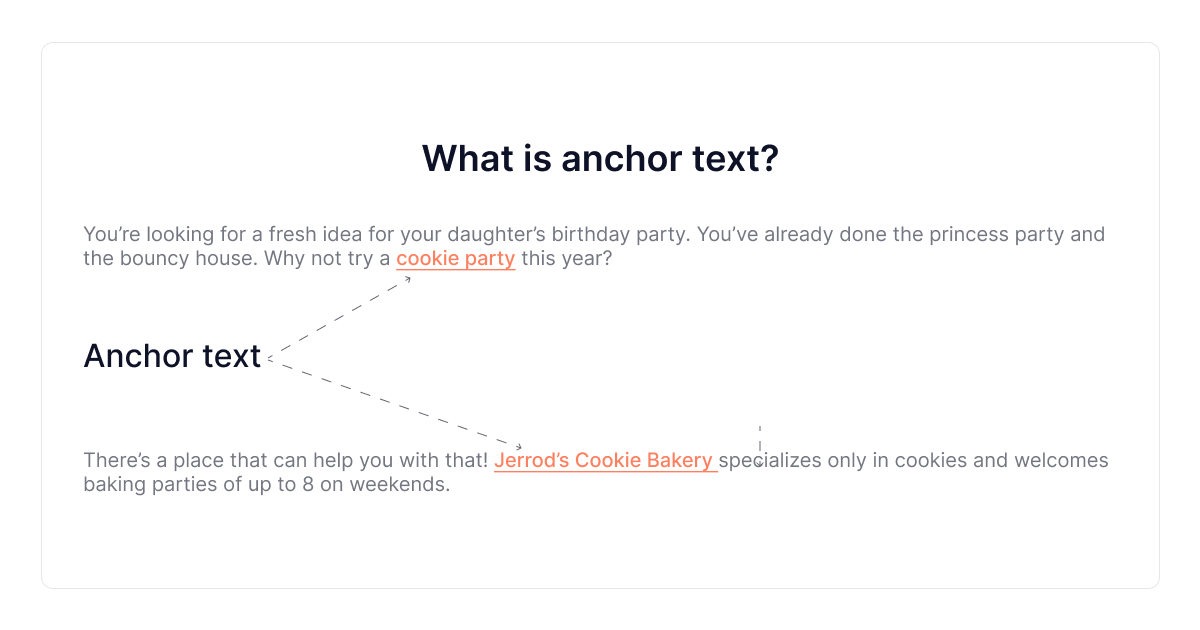
You can't tell the whole story in a single breath — the same goes for content strategy.
Plus, it is not wise nor productive.
However, including internal links in a single article that points out other essential elements of the subject is an excellent way to prove your level of expertise while promoting your work.
People understand how to identify engaging content that bring value rather than merely providing information. Then, take advantage of it.
4. Nurture Your Audience Network
Many authors overlook the need to nurture their audience, which can ruin their reputation.
If you are serious about growing your brand through the content you create, don't be hesitant to communicate with your audience:
- Always respond to comments and questions
- Promote your guest post on social media
- Send a "Thank you" note
- Implement outreach sequences
Your audience will value your presence and ability to share, comment, and respond to likes.
Conversely, if you do not nurture a relationship with your readers, they will perceive you as ignorant and arrogant. Therefore, they will seek another author to admire, love and respect.
How To Start Guest Blogging With TextCortex?
As mentioned at the beginning, content strategy development is always in progress. As a result, people often come up with new ways to be more successful in online business promotion.
Implementing guest blogging in your content strategy can be a great addition to your blog conversion funnel and an asset in reducing the bounce rate on your website.
However, all those strategies have no effect without consistently producing high-quality, engaging content that will attract your audience and keep them interested.
That is why we created TextCortex — it will take over 80% of your writing work, generate content at scale, and always provide natural-sounding and compelling content.
How does it do that?
TextCortex is a use-case module-based AI writing assistant that uses machine learning and advanced algorithms to write content within seconds based on single keywords or concepts.
Its AI writers rely on a knowledge base of 3 billion best-practice phrases of human text.
That means you can expect your result to be 98% unique and 2% inventive with a human touch involved.

What does it offer?
TextCortex comes as a web application and rewriter Chrome extension. You can use a web application to generate the projects you can save for future use and to edit your text.
Editable canvas will allow you to mix manual input with desirable content templates such as blog articles, title generator, rewriting and autocomplete options.
Apart from that, you can generate social media posts, youtube captions, ads, cold emails, and subject lines according to your preferences in 72+ languages.
At the same time, our rewriter extension offers the comfort of any textbox, whether you need to:
- Rewrite your sentences or entire paragraphs
- Write a blog post from a single sentence
- Generate cold email from bullet points
- Expand your text
The best part is that you don’t need a paid version to give it a try. Our free version offers 10 free daily creations with the ability to earn more with referrals and tool validation.
What are the requirements to try it out?
Claim your free account today and see how TextCortex can generate high-quality content on the go while also improving your writing skills and increasing your conversion chances.


.jpg)

